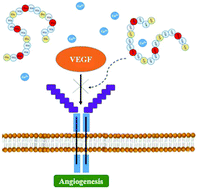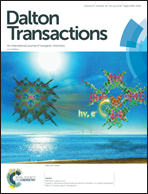Peptides derived from the histidine–proline rich glycoprotein bind copper ions and exhibit anti-angiogenic properties†
Abstract
The role of copper in cancer progression has been established since decades. Additionally, copper is able to stimulate angiogenesis through the control of VEGF expression and activity in endothelial cells. In this paper a tetrapeptide, belonging to the histidine–proline-rich glycoprotein (HPRG) and encompassing four repeats of the sequence GHHPH (named TetraHPRG), was synthesized and its copper(II) complex species were characterized by means of potentiometry, UV-vis, circular dichroism (CD), electron paramagnetic resonance (EPR) and electron spray ionization mass spectrometry (ESI-MS). Moreover, a peptide covalently bound through an amidic bond to trehalose (TH-TetraHPRG) was designed and synthesized as a prodrug system. The activity of both TetraHPRG and TH-TetraHPRG molecules on copper and VEGF induced angiogenic responses in endothelial cells was assessed. The two peptides show a similar and effective anti-angiogenic activity on both molecular and cellular responses. Since the trehalose derivative has a higher resistance to enzymatic degradation, it can be further exploited as a potential drug delivery system with anti-angiogenic activity.



 Please wait while we load your content...
Please wait while we load your content...